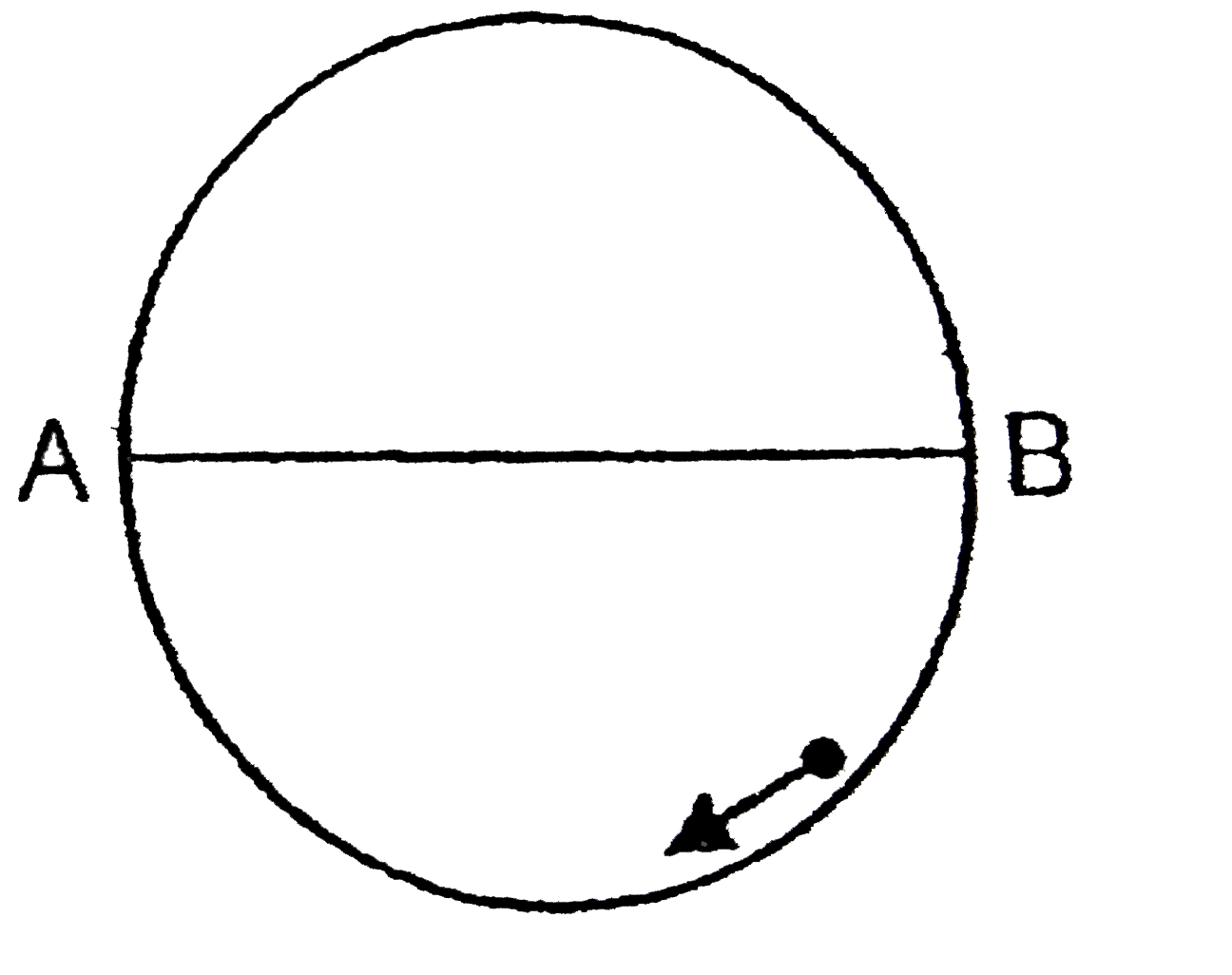A particle of mass m moves along the internal smooth surface of a vertical cylinder of the radius R. Find the force with which the particle acts on the cylinder wall if at the initial moment of time its velocity equals v0. And forms an angle α with the horizontal.
mV20Rsin2α
mV202Rcos2α
2mV20Rcos2α
mV20Rcos2α
The correct Answer is:D
To solve the problem, we need to analyze the motion of a particle of mass m moving along the internal smooth surface of a vertical cylinder of radius R. The particle has an initial velocity v0 that forms an angle α with the horizontal.
1. Identify the Components of Velocity:
The initial velocity v0 can be broken down into two components:
- Horizontal component: v0x=v0cos(α)
- Vertical component: v0y=v0sin(α)
2. Determine the Circular Motion Component:
For the particle to maintain circular motion along the internal surface of the cylinder, only the horizontal component of the velocity contributes to the centripetal force. Thus, we focus on v0x:
vcircular=v0cos(α)
3. Centripetal Force Requirement:
The centripetal force required to keep the particle in circular motion is provided by the normal force N exerted by the wall of the cylinder. The formula for centripetal force is:
Fcentripetal=mv2circularR
4. Substituting the Circular Velocity:
Substitute vcircular into the centripetal force equation:
Fcentripetal=m(v0cos(α))2R
5. Simplifying the Expression:
Simplifying the expression gives:
Fcentripetal=mv20cos2(α)R
6. Conclusion:
The force with which the particle acts on the cylinder wall (which is equal to the normal force N) is:
N=mv20cos2(α)R
Final Answer:
The force with which the particle acts on the cylinder wall is:
N=mv20cos2(α)R
The initial velocity v0 can be broken down into two components:
- Horizontal component: v0x=v0cos(α)
- Vertical component: v0y=v0sin(α)
For the particle to maintain circular motion along the internal surface of the cylinder, only the horizontal component of the velocity contributes to the centripetal force. Thus, we focus on v0x:
vcircular=v0cos(α)
The centripetal force required to keep the particle in circular motion is provided by the normal force N exerted by the wall of the cylinder. The formula for centripetal force is:
Fcentripetal=mv2circularR
Substitute vcircular into the centripetal force equation:
Fcentripetal=m(v0cos(α))2R
Simplifying the expression gives:
Fcentripetal=mv20cos2(α)R
The force with which the particle acts on the cylinder wall (which is equal to the normal force N) is:
N=mv20cos2(α)R
The force with which the particle acts on the cylinder wall is:
N=mv20cos2(α)R
Similar Questions
A particle of mass m moves along a horizontal circle of radius R such that normal acceleration of particle varies with time as an=kt2. where k is a constant.
Total force on particle at time t s is
View SolutionFind the moment of inertia of a solid cylinder of mass M and radius R about a line parallel to the axis of the cylinder and on the surface of the cylinder.
View SolutionA particle of mass m moves along a horizontal circle of radius R such that normal acceleration of particle varies with time as an=kt2. where k is a constant.
Tangential force on particle at t s is
View SolutionA particle of mass M is revolving along a circule of radius R and nother particle of mass m is recolving in a circle of radius r. If time periods of both particles are same, then the ratio of their angular velocities is
View SolutionA particle of mass m oscillates inside the smooth surface a fixed pipe of radius R. The axis of the pipe is horizontal and the particle moves from B to A and back. At an instant the kinetic energy of the particle is K (say at position of the particle shown in figure ). Then choose the correct value of force applied by particle on the pipe at this instant.

View SolutionA cylinder of mass m and radius R is kept on a rough surface after giving its centre a horizontal speed v0. Find the speed of the centre of the cylinder when it stops slipping.
View SolutionA particle of mass m initially moving with speed v.A force acts on the particle f=kx where x is the distance travelled by the particle and k is constant. Find the speed of the particle when the work done by the force equals W.
View SolutionFour particles of equal masses M move along a circle of radius R under the action of their mutual gravitational attraction. Find the speed of each particle.
View SolutionA particle of mass m moving with a speed v hits elastically another staionary particle of mass 2m on a smooth horizontal circular tube of radius r. Find the time when the next collision will take place?
View SolutionA particle of mass m moving with a speed v hits elastically another staionary particle of mass 2m on a smooth horizontal circular tube of radius r. Find the time when the next collision will take place?
View Solution
